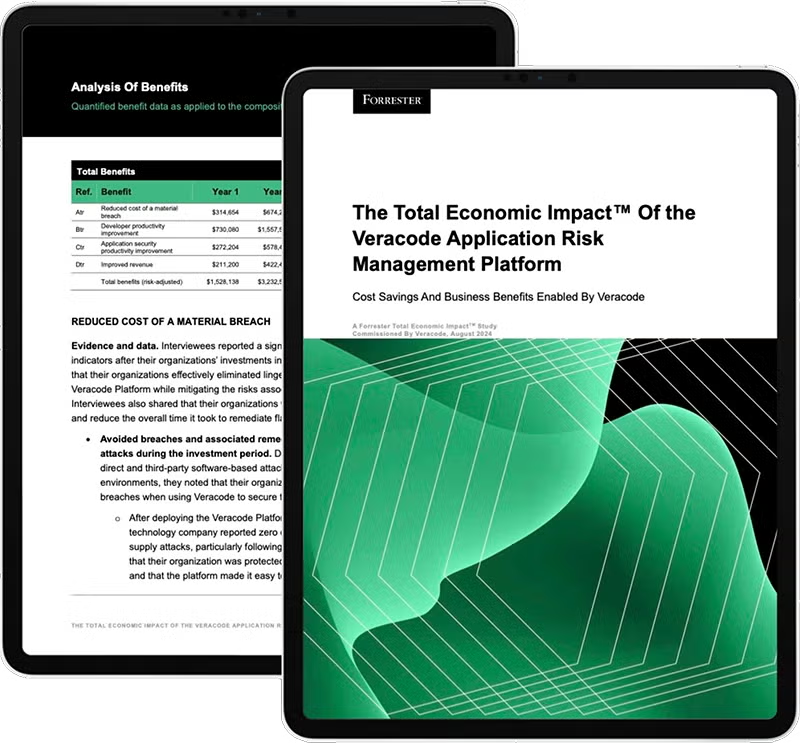If you’re a security professional like me, you’re not used to your function being seen as a revenue driver for your business; you’re used to being seen as a cost center. But what if you could demonstrate that security acts as a catalyst for innovation, even leading to 20% revenue increase? Here’s how a strategic security investment was not only able to help protect a business from potential threats, but also create a foundation for sustainable growth.
The basis for these insights is The Total Economic Impact™ Of the Veracode Application Risk Management Platform, a commissioned study conducted by Forrester Consulting on behalf of Veracode.
Applications as the New Perimeter
With the rise of cloud computing, mobile devices, and even AI-generated code, traditional network boundaries are no longer effective in protecting valuable data and assets. According to Forrester’s Security Survey, 2023, the main reasons reported by security decision-makers for external attacks leading to breaches were software vulnerability exploits and software supply chain breaches.
In 2022, 52% of these decision-makers stated that application-related exploits were the main external attack vector, which increased to 58% in 2023. This highlights the growing importance of securing applications as the new perimeter in today’s threat landscape.
The Strategic Security Investment Revealed
With applications as the top external attack vector, organizations are realizing the importance of investing in application security (AppSec). That’s the case with the composite organization in The Total Economic Impact™ Of the Veracode Application Risk Management Platform. This globally distributed organization leveraged the Veracode Platform to effectively shift security earlier into the development process.
Augmented scanning capacity permitted them to accelerate the software development lifecycle. In doing so, they brought features and products to market faster and had more time for developers to respond to customer feedback. Furthermore, the high level of security standard that they achieved opened up new markets and revenues streams in both the commercial and public sectors.
20% Revenue Growth Achieved with Profits Totaling $940K
With amplified development velocity and a more secure, customer-centered product offering, the organization achieved 20% revenue growth which looked like additional profits totaling $940,000. This is on top of a return on investment (ROI) of 184%, a net present value (NPV) of $4.60 million, and a payback period of less than six months.
Customer interviews leveraged in the creation of the composite organization revealed further insights into how this agility benefits their organization:
“We’re constantly delivering new feature functions every two weeks. Back in the day, a customer might be sitting on a version for three years with no feature function improvement and then go through an upgrade that takes six or eight months [to get it], whereas now we’re deploying new features and functions every two weeks.” – Director of risk and security, software company
Conclusion
By investing in risk management strategies where they matter most, companies can not only protect themselves from potential threats but also improve their overall operations and customer trust. This can lead to increased sales and market share, ultimately resulting in higher revenue and profitability. Therefore, it is crucial for businesses to recognize the value of risk management and allocate resources towards it in order to achieve long-term success and growth. Learn more by downloading your copy of the study now.


